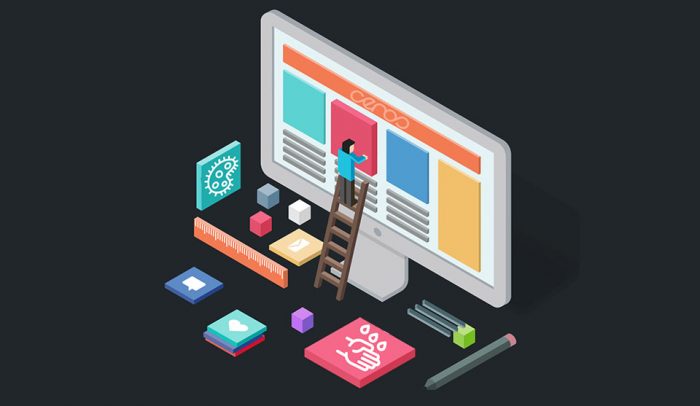What moves a company forward?
Sometimes the force is a new leader—a visionary executive who sees opportunity in doing things differently. Sometimes it’s an acquisition—a tech-savvy parent company comes in and updates things to match the rest of its organization. And, sometimes, it’s a crisis. Because the company in question has no other choice. It’s forced, by some unseen market force or force of nature, to adapt to the 21st century, and if it doesn’t, it can’t operate.
The coronavirus pandemic has been that crisis for a number of companies, and one upside is that it’s forced a transformation that was, in some cases, years overdue. The digital reformation—that back-of-the-mind idea these companies just never quite got around to—was happening now. Here are the stories of a few companies that were launched into the 21st century by social distancing.
Shifting sales
Al DiLeonardo’s entire business had been upended by the coronavirus. DiLeonardo is the CEO and president of Vector Marketing, the sales and marketing arm of Cutco cutlery. Since Cutco’s founding in 1949, its sales reps, mostly enterprising college students, have scheduled in-home presentations, demonstrating the quality of Cutco knives by cutting objects like pennies and leather swatches right in the customer’s kitchen. Some past reps include presidential candidate Andrew Yang, comedian Daniel Tosh, and former Uber CEO Travis Kalanick. Cutco’s sales process has largely stayed the same since those famous names were reps—even since DiLeonardo himself was a rep as a college student in the late ’70s.
“The whole idea was that the knives were high-quality products,” DiLeonardo said, “and when the quality is demonstrated in person, it was a benefit to the customer.”
But then social distancing forced Vector to adapt or miss out on months of revenue. And that meant reps taking their sales demonstrations online. While there had been a protocol in place for virtual presentations before the pandemic, DiLeonardo said it was an afterthought, compared to the in-person experience. Now, the Vector executive team had to rethink the company’s virtual strategy and devote significant attention to refining the online presentation. Because the process isn’t the same when you can’t hand the knife to the customer, or have them do the cutting.
So now, for the time being, all Cutco demonstrations are conducted on the customer’s preferred online bridge, whether it’s Zoom, GoToMeeting, FaceTime, or another. The presentation has been refined to better complement the virtual setting. And business has been strong—DiLeonardo said that sales volume was up 114% last week.
“When I started as a rep in 1977, I was taught that the customer had to touch the knife, feel the knife, cut the leather, cut the penny to understand,” DiLeonardo said. “And now, it seems like that might not matter as much as we thought.”
Cutco has the benefit of being in a booming industry—at-home cooking has skyrocketed over the past two months—but companies in other industries are also seeing success transitioning to virtual consultations. Frette, an Italian luxury linen company with its North American headquarters in New York, sells its linens both directly to consumers and in wholesale to hospitality companies. Its sheets dress the mattresses in hotels like the Four Seasons in Milan and the Mandarin Oriental in Boston. But with most hotels forced into closure, the hospitality side of the business has grinded to a halt. So that means the majority of the focus is on its direct-to-consumer side, generating business through e-commerce.
For a 170-year-old brand, Frette was already pretty technologically savvy. The company had a pre-existing e-commerce setup which generated adequate sales, according to Paola Pugliese, global head of marketing and communications. But since the team could no longer count on in-store sales or substantial business from the hospitality side, it knew it needed to do more.
“We’ve started doing a virtual styling studio, which allows a customer to have a personal appointment without having to go to a store,” said Colton Kegley, Frette’s senior designer. “We’ve now put emphasis on making sure that option is there digitally.”
Because Frette is a traditional company that cares about maintaining the human touch online, the virtual styling studio is surprisingly simple. The team set up a dedicated email address, called out on a popup on Frette’s home page, to which interested customers can send a message. From there, the Frette team—meaning a real person, not a chatbot—facilitates a conversation with a specialist over the customer’s preferred bridge. While the company is working on an integrated booking system for the future, Pugliese says, it’s important to Frette to keep the experience highly personal.
“That’s what makes Frette so special to our customers,” she said.
And though it’s still early, Pugliese says she’s encouraged by the direct-to-consumer sales that the virtual style studio has generated over the past few weeks.
But of course, Frette hasn’t abandoned its partners on the hospitality side during the pandemic. Allison Vajda, Frette’s global marketing and communications manager, said that while the team isn’t expecting purchases from hotel partners in the short term, they’re reaching out via email to offer a shoulder to lean on.
“Right now, it’s all about the personal relationship and the connection with our hotel partners,” she said. “Those people will remember that we checked in on them and didn’t push our product on them when the hotel was shut down and they had no clients.”
The revolution for Frette wasn’t restricted to external business. Kegley also mentioned that Frette wasn’t very well-suited to handle remote work before the pandemic started, a common refrain at old-school companies. Now that his team has been forced to work remotely for a number of weeks, it’s come a lot more naturally to the company.
Vector, too, experienced some benefits internally. Previously, the company conducted only in-person interviews and training sessions. Those, too, have all shifted to the virtual world. Not only might that save Vector some money on real estate and office space, but it allows the executives to perfectly standardize onboarding and training, leading to more consistency across the board.
Learning to lead with empathy
Avery Dennison is a multinational company that produces labels and logos for apparel manufacturers, like the company logo or the label on an athletic t-shirt. In that regard, its clients in apparel and footwear (and thus, Avery Dennison itself) are facing an unprecedented challenge: no one is buying clothes right now, and the winds in e-commerce aren’t offsetting the losses.
That especially hurts companies in an industry that remains dominated by in-person selling at conferences or trade shows. “In this industry, sales teams in general think a lot about being on the ground, meeting people, forging those connections in-person,” said Emily Spiegel, senior marketing manager for apparel and footwear.
But trade shows have been cancelled across the globe. Plus, as Spiegel mentioned, people aren’t buying clothes anymore. So, what can Avery Dennison do in the meantime to keep business humming?
Basically, the company’s apparel and footwear division boiled down its best approach to an increased focus on empathy. Spiegel and her fellow marketers have launched a charitable campaign to support those fighting the pandemic. For the campaign, called Patched Together, the Avery Dennison team is featuring 23 limited-edition digital patches honoring essential workers and calling for togetherness. The physical patches will go on sale to consumers in the coming weeks, but in the meantime, the team created virtual stickers and GIFs on GIPHY that its audience can share on social or add to photos. Proceeds from the campaign will benefit the Avery Dennison’s preferred charity, Doctors Without Borders.

For Spiegel and her team, it’s not about generating ROI right now, at least not in a traditional sense. She’s trying to reach her audience on a human level, appreciative of the struggles that all people are going through right now, and let them know that she cares.
“People will buy clothes again,” she said. “So when they do, the onus is going to be on marketers to really evolve, and to reach people who have a whole new set of priorities, and reasons for buying clothes.”
Are the changes here to stay?
One big question remains: will the technological improvements made during the COVID-19 pandemic stick, or will these companies revert to their previous methods once social distancing restrictions are lifted? DiLeonardo isn’t quite sure yet—there’s far too much uncertainty on the other side of this. Pugliese agrees there’s so much that we don’t know. DiLeonardo still believes in the power of in-person selling, but noted that his reps can access more people with more efficient demos by conducting them online.
“I don’t know what the future holds,” DiLeonardo said. “I think there are some things that are working for us in this pandemic situation. The question is, will they still work in a normal situation? But I really believe that the virtual presentation is here to stay, and I think it will continue here in some capacity.”
Kegley, too, anticipates that virtual appointments will become a bigger part of Frette’s sales strategy going forward. “We probably should’ve had (the virtual styling studio) before,” he said. “It’ll be something that we continue to build out over time.”
As some of these pillars of old-school tactics experiment with technological advances and experience their benefit, it’s fair to wonder how long those traditional tactics have left. But it’s clear to see why some of these insightful strategies are coming into focus now. Sometimes, all it takes is a crisis.
“People have this false idea of creativity,” Spiegel said. “People think, ‘if I had a blank canvas and all the time in the world to produce something, what could I create?’ I think true creativity is being able to work with constraints. That’s why you’re seeing all these amazing ideas lately.”



